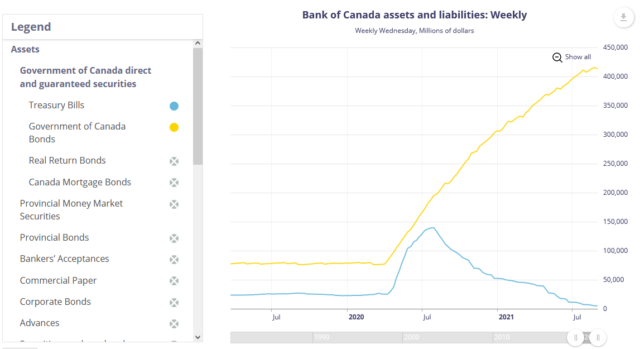Since the beginning of July, the Bank of Canada’s balance sheet hasn’t really gone anywhere. This is despite stating in the July 14th interest rate announcement that they would be continuing QE at a $2 billion/week rate.
Before COVID-19 began, the Bank of Canada historically has held about $75 billion in government bonds and $25 billion in (short term) treasury bills.
Today, the balance sheet consists of about $6 billion in treasury bills and $414 billion in government bonds.
The size of the Bank of Canada balance sheet is the same on August 11th as it was on September 1st. I would expect the balance sheet to increase slowly with QE but this hasn’t been happening.
For every asset there is either liability or equity, and in this case, the liability is the amount due to Members of Payments Canada (the big banks) – they collectively are owed about $276 billion as of the last September 1st snapshot.
We will see what happens on September the 8th when the next rate announcement is made. Given the ongoing federal election, there will be a lot of eyes on this report from non-traditional viewers.
On the US side, things still show no sign of stopping – it’s QE forever there.
This monetary froth, one way or another, ends up inflating the value of yield-bearing assets. The most obvious targets are government bonds themselves, but as money permeates up the risk spectrum, anything with a yield gets bidded up, making future returns on capital much lower, to the benefit of incumbent asset holders.

This one is a miss, September 8, 2021 policy announcement:
“The Bank is maintaining its extraordinary forward guidance on the path for the overnight rate. This is reinforced and supplemented by the Bank’s quantitative easing (QE) program, which is being maintained at a target pace of $2 billion per week.”